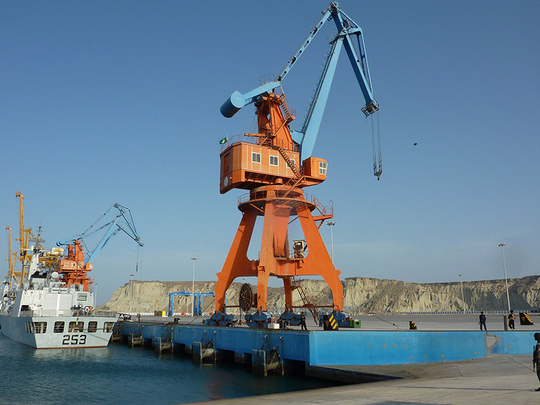
Islamabad: The second phase of the multi-billion dollar China-Pakistan Economic Corridor (CPEC) is offering Pakistan’s economic and development sector a much-needed boost. At least 90 projects under CPEC have been completed whereas 28 are in the implementation phase and 41 in the pipeline, President Dr. Arif Alvi said in a webinar.
In the initial phase of CPEC, Pakistan focused on energy generation and almost 9 projects are operational with a 5,320 MW capacity, and three are under construction, the president said. Pakistan has also initiated steps to convert the CPEC project into China-Pakistan Green Economic Corridor project by deferring 2,740 MW of previous imported coal projects and replacing it by zero-carbon and hydropower projects of 3,700 MW.
The construction of Gwadar International Airport would enhance regional connectivity and directly link Gwadar, considered the crown jewel of CPEC, to Chinese northwestern regions as well as Central Asia. With the revival of peace in Afghanistan, the contribution of Pakistan and China through CPEC would be crucial in the reconstruction of Afghanistan, the president said.
Detailing the key projects under CPEC, he said the Multan-Sukkur Motorway of 392km and KKH Havelian-Thakot expressway were completed this year while the ML-1 rail link project between Karachi and Peshawar would be launched soon. An optic cable from Khunjerab to Islamabad had been laid, and another from Islamabad to Karachi and Islamabad to Gwadar is being built. A 300MW coal-fired plant and a desalination plant with a capacity of 1.3 million gallons per day (MGD) were also being processed.
Pakistan and China signed at least $11 billion worth of projects in the last month under the CPEC part of China’s Belt and Road Initiative (BRI) including two hydropower projects worth $3.9 billion and another $7.2 billion project to revamp Pakistan’s railway.
Addressing a webinar on ‘CPEC and its Impact on the Region’, President Alvi rejected the notion that Chinese loans overburdened the country’s economy. Chinese investment did not “overburden” the Pakistani economy but “it improves our financial system” he said, adding that the Pakistan government expected Chinese investment and cooperation in every sector of the economy.
The COVID-19 pandemic did not affect the CPEC projects in fact Pak-China bilateral cooperation has increased during this period, the officials said. In a separate webinar on ‘New Opportunities and Challenges of China-Pakistan Cooperation in the Post-Epidemic Era’, Chinese Ambassador Yao Jing said his country’s assistance for Pakistan was worth $15 million during the coronavirus threat. CPEC projects currently provide job opportunities to over 60,000 Pakistanis while 13,000 Chinese technicians, engineers and experts are also working on the projects, he said.
CPEC Authority Chairman Lt Gen Asim Bajwa said some detractors had given the “false impression” that CPEC had been slowed. Not only has the work on projects picked up recently, but a great deal of groundwork has been done to launch phase two of the project that also includes $7.2 billion railway line, special economic zones, agriculture, science, technology and tourism sectors, he said. A total of nine special economic zones are planned to spur mass industrialization with three prioritized zones in Rashakai (KP), Faisalabad (Punjab), and Dhabeji (Sindh) near Karachi.
Industrialization and agricultural growth is the priority for Pakistan government. “Our focus is on agriculture yield, induction of technology and water conservation and farm management,” Bajwa said. To boost the tourism sector, Chinese investment would be utilized for cellular coverage, transportation, and energy projects, particularly in AJK and Gilgit-Baltistan.








